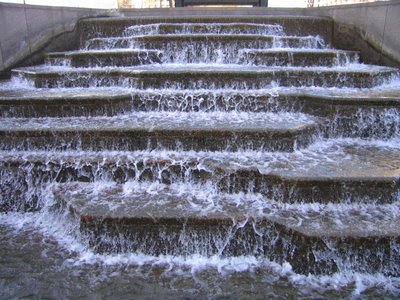 While the Bush Administration and the federal government continues to distance itself from a pledge to provide major funding for a major Great Lakes restoration program, one local leader advocates a reasonable way for residents and officials in the region to generate billions of dollars in funding and begin paying for the public works project themselves.
While the Bush Administration and the federal government continues to distance itself from a pledge to provide major funding for a major Great Lakes restoration program, one local leader advocates a reasonable way for residents and officials in the region to generate billions of dollars in funding and begin paying for the public works project themselves.The region could raise over $634 million per year by assessing a $15 quarterly fee to the 10.5 million households in the US portion of the Great Lakes, according to Jim White, executive director of the Cuyahoga River Remedial Action Plan in Cleveland. At $25 per quarter, the region could raise more than $1 billion annually.
"Congress has neither the will nor the resources to pay for all the restoration needs in the Great Lakes," Mr. White said. "And, locally, our existing approach and organizational structure suggests we are not serious about protecting or restoring our water resources. We are not organizing or managing our assets to solve our problems."
The biggest problem in the greater Great Lakes today is an economic development strategy unfit for the 21st century. But the biggest asset is the Great Lakes ecosystem. The region must leverage that asset with thoughtful and targeted investments.
The Lakes remain soiled by the Industrial Revolution. But an aggressive plan to restore the globally unique waters - as proposed by the $20 billion Strategy to Restore and Protect the Great Lakes - will not only restore environental magnificence. It will prepare the region to compete in the global knowledge economy by elevating the quality of life, inspiring cutting-edge innovation, accelerating job growth, securing existing industries, and stregthening the overall economy today and for the future.
That's a signigicant return on investment that's worthy of local and national solidarity and funding.